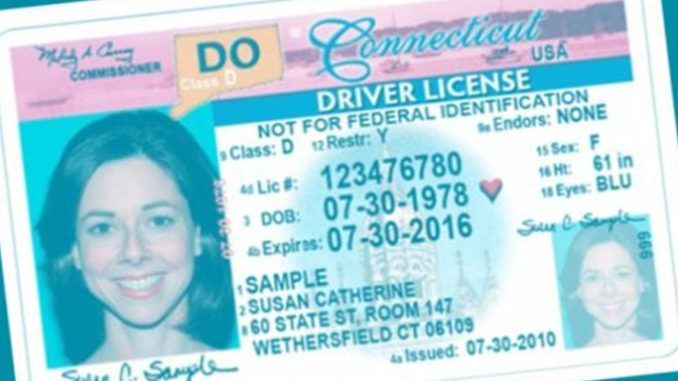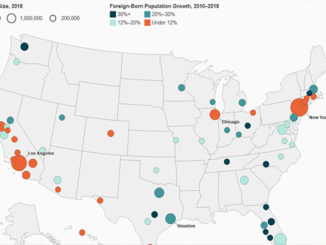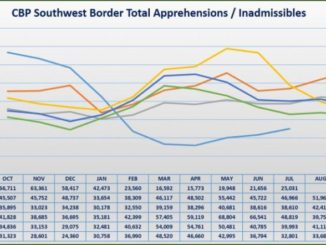
by Christopher Burrell
Connecticut has seen a reduction in hit-and-run crashes over the past three years, which some safety experts attribute to the state’s four-year-old policy of allowing undocumented immigrants to obtain driver’s licenses.
The track record in Connecticut, based on state data and interviews with police and immigrants, could offer lessons for Massachusetts and at least four other states currently debating whether to follow suit.
Statewide, hit-and-run crashes dropped by 9 percent between 2016 and 2018.
Across 10 Connecticut cities with the highest concentration of drive-only licenses issued to undocumented immigrants, there were 1,200 fewer hit-and-run crashes since 2016, according to state data obtained by the New England Center for Investigative Reporting. That’s a 15 percent decrease over three years. The state didn’t compile hit-and-run crash data before 2015.
By comparison, in 10 Connecticut communities with the lowest rates of drive-only licenses, hit-and-run crashes edged up about 5 percent in the same time period.
“The numbers are coming to bear that it is making the roads safer, and any decrease is a very good thing,” said Charles Grasso, a former police sergeant and a car-crash expert at the University of Connecticut’s Transportation Safety Research Center.
Besides Connecticut, 11 other states and D.C. allow undocumented immigrants to drive legally. Massachusetts is considering legislation to implement a similar program.
Sebastian, a 30-year-old from Guatemala and resident of New Haven, Conn., has taken advantage of the program. WGBH News is not using his full name because of his immigration status.
“Before I got the license, I was scared because sometimes [I’d] see a state trooper and think, ‘I hope he’s not pulling me over.’ But after that I have the driver’s license. I feel safe like American people. They drive without worries,” he said.
That means about 80 miles a day of worry-free driving for this construction worker who’s expecting his first child to be born in a few months.
The law allowing Sebastian and immigrants like him to drive legally went into effect in 2015, creating a license marked with the letters “DO.” License-holders can’t use the document to get through airport security or to be placed on voter rolls. Sebastian had to prove residency in the state, pay $72 and get his car insured.
Before 2015, he got behind the wheel without a license for about six years — running the risk of being caught by police, fined and possibly funneled into the federal immigration system and deportation.
Sebastian and other immigrants interviewed say that with the new licenses, they are much less worried that a traffic stop might lead them into the hands of federal immigration authorities. Some experts believe that awareness by drivers like Sebastian could be making roads in Connecticut safer — especially when it comes to hit-and-run crashes, because an undocumented immigrant would have no reason to flee the scene of a crash.
Grasso, who works with police statewide, is hearing from local law enforcement that drive-only licenses are changing behavior.
“The feedback I’m getting is that the licenses are keeping people at the scene because they know that they have a driver’s license now,” said Grasso.
In the capitol city of Hartford, where hit-and-run crashes fell more than 20 percent since 2016, police Lt. Paul Cicero is skeptical about the link between drive-only licenses and improved road safety. There are roughly 2,000 newly-trained and licensed immigrant drivers in the city, but Cicero pointed to traffic cameras and better street policing as reasons for lower hit-and-run crash numbers.
But Cicero said the IDs do help with policing, saving officers time when issuing routine citations.
“There’d be times we pulled somebody over and they don’t have any ID and it takes an officer off the road for one, two, three hours,” said Cicero. “It typically ruins someone’s day going to jail, getting fingerprinted, getting photographed, waiting for fingerprints to come back. So, having these drive-only licenses can be very beneficial to both the police and the community.”
Increased revenue for the state is one more benefit. Connecticut’s Department of Motor Vehicles has collected $7.5 million in license fees over four years — offset by $300,000 to ramp up the new license program.
Small businesses like Santo Driving School in Hartford that offer classes in Spanish filled up seats after the law was implemented.
“It increased a lot of business, probably that first year about an additional thousand,” said owner Sal Calafiore.

With thousands of newly legal drivers on the road, police in Connecticut have charged about 4,000 fewer people with unlicensed driving in the last four years, according to Connecticut judicial data obtained by NECIR. That translates to roughly a million-dollar decrease in fines levied by state courts. In 2017, more than 21,000 motorists in Massachusetts faced millions of dollars in fines for unlicensed driving, according to Massachusetts trial courts’ data.
For immigrants like Luis, a landscaper living in New Haven, such fines posed a hardship.
“Sometimes we don’t have the money,” he said. “Even myself, I got my family, I got my wife, my kids. It’s too hard for me to pay you $500 in fines.”
That economic burden is gone now — a big relief to Luis, who can now drive his children to soccer tournaments in Boston and Baltimore.
Luis said the drive-only licenses definitely give him and other undocumented immigrants a better chance of avoiding arrest by federal immigration authorities, but he worries that the license also makes him a marked man — especially if he thinks it might be an ICE officer staring back at him.
“You can give your license [and] because they say driving only, they know your status. So, you can get arrested you right away,” said Luis.
The Rev. James Manship, a Catholic priest who helped immigrants lobby Connecticut legislators for the license law several years ago, said advocates now caution immigrants not to carry their drive-only license on a jobsite where they could encounter an ICE agent.

A Connecticut law called the Trust Act already bans local and state police from cooperating with federal immigration authorities in most cases, but immigrant advocates are pushing state legislators to close loopholes in that law.
They also worry that issuing driver’s licenses to people like Luis essentially creates a database of undocumented immigrants that could be exploited by a federal administration that has been very clear about wanting them out of the country.
Conservative critics of the law in Connecticut — and in other states considering similar legislation, including Massachusetts — argue that giving driver’s licenses to undocumented immigrants paves the way for voter fraud. Most states allow motorists to register to vote when they get driver’s licenses.
Massachusetts legislators pushing for their drivers license bill are adamant about addressing both concerns. They say the Registry of Motor Vehicles already has safeguards to make sure drivers ineligible to vote don’t get on voter rolls. And they say they’ve been very clear that the state will not willingly share any personal information about drivers with outside sources.
There’s no date set for the Massachusetts bill to get a hearing in front of the legislature’s transportation committee.
Michael Wishnie, who heads up Yale Law School’s immigrant rights clinic, believes more states looking to move in this direction might see Connecticut as a good example.
“Everyone’s going to use our roads. We know that’s going to happen. We want people to register their cars, get them inspected by insurance, take the eye exam, take the road test,” he said. “And the way that we can make our roads safer is to bring people into the system rather than to force them to the shadows.”
This piece comes to us from the New England Center for Investigative Reporting.



